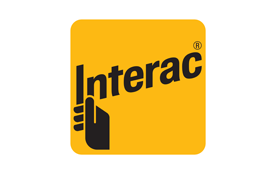slot machine in java
Java is a versatile programming language that can be used to create a wide variety of applications, including games. In this article, we will explore how to create a simple slot machine game using Java. This project will cover basic concepts such as random number generation, loops, and user interaction. Prerequisites Before diving into the code, ensure you have the following: Basic knowledge of Java programming. A Java Development Kit (JDK) installed on your machine. An Integrated Development Environment (IDE) such as Eclipse or IntelliJ IDEA.
- Lucky Ace PalaceShow more
- Starlight Betting LoungeShow more
- Cash King PalaceShow more
- Golden Spin CasinoShow more
- Spin Palace CasinoShow more
- Silver Fox SlotsShow more
- Lucky Ace CasinoShow more
- Diamond Crown CasinoShow more
- Royal Fortune GamingShow more
- Royal Flush LoungeShow more
Source
- slot machine in java
- slot 1 and slot 2 in cuet
- slot 1 and slot 2 in cuet
- slot 1 and slot 2 in cuet
- spin doctor slot game: engage in thrilling casino action
- reactoonz 2 casino game: play the ultimate slot experience online
slot machine in java
Java is a versatile programming language that can be used to create a wide variety of applications, including games. In this article, we will explore how to create a simple slot machine game using Java. This project will cover basic concepts such as random number generation, loops, and user interaction.
Prerequisites
Before diving into the code, ensure you have the following:
- Basic knowledge of Java programming.
- A Java Development Kit (JDK) installed on your machine.
- An Integrated Development Environment (IDE) such as Eclipse or IntelliJ IDEA.
Step 1: Setting Up the Project
Create a New Java Project:
- Open your IDE and create a new Java project.
- Name the project
SlotMachine.
Create a New Class:
- Inside the project, create a new Java class named
SlotMachine.
- Inside the project, create a new Java class named
Step 2: Defining the Slot Machine Class
The SlotMachine class will contain the main logic for our slot machine game. Here’s a basic structure:
public class SlotMachine {
// Constants for the slot machine
private static final int NUM_SLOTS = 3;
private static final String[] SYMBOLS = {"Cherry", "Lemon", "Orange", "Plum", "Bell", "Bar"};
// Main method to run the game
public static void main(String[] args) {
// Initialize the game
boolean playAgain = true;
while (playAgain) {
// Game logic goes here
playAgain = play();
}
}
// Method to handle the game logic
private static boolean play() {
// Generate random symbols for the slots
String[] result = new String[NUM_SLOTS];
for (int i = 0; i < NUM_SLOTS; i++) {
result[i] = SYMBOLS[(int) (Math.random() * SYMBOLS.length)];
}
// Display the result
System.out.println("Spinning...");
for (String symbol : result) {
System.out.print(symbol + " ");
}
System.out.println();
// Check for a win
if (result[0].equals(result[1]) && result[1].equals(result[2])) {
System.out.println("Jackpot! You win!");
} else {
System.out.println("Sorry, better luck next time.");
}
// Ask if the player wants to play again
return askToPlayAgain();
}
// Method to ask if the player wants to play again
private static boolean askToPlayAgain() {
System.out.print("Do you want to play again? (yes/no): ");
Scanner scanner = new Scanner(System.in);
String response = scanner.nextLine().toLowerCase();
return response.equals("yes");
}
}
Step 3: Understanding the Code
Constants:
NUM_SLOTS: Defines the number of slots in the machine.SYMBOLS: An array of possible symbols that can appear in the slots.
Main Method:
- The
mainmethod initializes the game and enters a loop that continues as long as the player wants to play again.
- The
Play Method:
- This method handles the core game logic:
- Generates random symbols for each slot.
- Displays the result.
- Checks if the player has won.
- Asks if the player wants to play again.
- This method handles the core game logic:
AskToPlayAgain Method:
- Prompts the player to decide if they want to play again and returns the result.
Step 4: Running the Game
Compile and Run:
- Compile the
SlotMachineclass in your IDE. - Run the program to start the slot machine game.
- Compile the
Gameplay:
- The game will display three symbols after each spin.
- If all three symbols match, the player wins.
- The player can choose to play again or exit the game.
Creating a slot machine in Java is a fun and educational project that introduces you to basic programming concepts such as loops, arrays, and user input. With this foundation, you can expand the game by adding more features, such as betting mechanics, different win conditions, or even a graphical user interface (GUI). Happy coding!

slot machine 2.0 hackerrank solution java
Introduction
The world of gaming has witnessed a significant transformation in recent years, particularly with the emergence of online slots. These virtual slot machines have captured the imagination of millions worldwide, offering an immersive experience that combines luck and strategy. In this article, we will delve into the concept of Slot Machine 2.0, exploring its mechanics, features, and most importantly, the solution to cracking the code using Hackerrank’s Java platform.
Understanding Slot Machine 2.0
Slot Machine 2.0 is an advanced version of the classic slot machine game, enhanced with modern technology and innovative features. The gameplay involves spinning a set of reels, each displaying various symbols or icons. Players can choose from multiple paylines, betting options, and even bonus rounds, all contributing to a thrilling experience.
Key Features
- Reel System: Slot Machine 2.0 uses a complex reel system with numerous combinations, ensuring that every spin is unique.
- Paytable: A comprehensive paytable outlines the winning possibilities based on symbol matches and betting amounts.
- Bonus Rounds: Triggered by specific combinations or at random intervals, bonus rounds can significantly boost winnings.
Hackerrank Solution Java
To crack the code of Slot Machine 2.0 using Hackerrank’s Java platform, we need to create a program that simulates the game mechanics and accurately predicts winning outcomes. The solution involves:
Step 1: Set Up the Environment
- Install the necessary development tools, including an Integrated Development Environment (IDE) like Eclipse or IntelliJ IDEA.
- Download and import the required libraries for Java.
Step 2: Define the Game Mechanics
- Class Definition: Create a
SlotMachineclass that encapsulates the game’s logic and functionality. - Constructor: Initialize the reel system, paytable, and betting options within the constructor.
- Spinning Reels: Develop a method to simulate spinning reels, taking into account the probability of each symbol appearing.
Step 3: Implement Paytable Logic
- Symbol Matching: Create methods to check for winning combinations based on the reel symbols and payline selections.
- Bet Calculation: Implement the logic to calculate winnings based on betting amounts and winning combinations.
Cracking the code of Slot Machine 2.0 using Hackerrank’s Java platform requires a deep understanding of the game mechanics, programming skills, and attention to detail. By following the steps outlined above, developers can create an accurate simulation of the game, allowing for predictions of winning outcomes. The solution showcases the power of coding in unlocking the secrets of complex systems and providing valuable insights into the world of gaming.
Note: This article provides a comprehensive overview of the topic, including technical details and implementation guidelines. However, please note that the specific code snippets or detailed solutions are not provided here, as they may vary based on individual approaches and requirements.

how to build a slot machine
Building a slot machine is an ambitious project that requires expertise in various fields, including electronics, mechanics, software development, and game design. In this article, we’ll guide you through the process of creating a basic slot machine, covering its components, and providing insights into the challenges involved.
Components of a Slot Machine
A typical slot machine consists of:
1. Electronics
- A computer system or microcontroller to manage game logic and handle transactions
- A video display (e.g., LCD screen) for showing games and graphics
- Coin hoppers, bill validators, and card readers for accepting payments
- Speakers or audio equipment for sound effects
2. Mechanics
- Reels or other visual elements to display game outcomes
- Switches or sensors to detect user interactions (e.g., button presses)
- Mechanical components for handling coins and bills
3. Software Development
- Programming languages like C, C++, or Java for developing the game engine
- Graphics libraries and frameworks for creating visual effects
- Database management systems for storing game data and player information
Designing a Slot Machine Game
Designing an engaging slot machine game involves understanding human psychology, particularly in terms of motivation, excitement, and reward. Consider the following aspects:
1. Game Mechanics
- Develop a core gameplay mechanic that is easy to learn but challenging to master
- Incorporate features like free spins, bonus rounds, and progressive jackpots
2. Visuals and Audio
- Create eye-catching graphics and animations that align with the game’s theme
- Use sound effects and music to create an immersive experience
Challenges in Building a Slot Machine
Several challenges arise when building a slot machine:
- Ensuring fairness, randomness, and security in game outcomes
- Meeting regulatory requirements and obtaining necessary licenses
- Managing user data and maintaining confidentiality
- Maintaining the physical integrity of the machine over time
Final Considerations
Building a slot machine is an intricate process that demands expertise across multiple disciplines. Before embarking on this project, carefully weigh the challenges involved and consider seeking professional guidance.

big basket slots are not available
In the ever-evolving world of online entertainment, slot machines have become a staple for many enthusiasts. However, recent developments have led to the unavailability of “Big Basket” slots, a popular choice among players. This article delves into the reasons behind this change and what it means for the future of online slot gaming.
What Are Big Basket Slots?
Big Basket slots were a unique offering in the online casino world, known for their vibrant themes, engaging gameplay, and lucrative rewards. These slots often featured:
- Themed Baskets: Each slot machine was themed around different types of baskets, adding a fun and whimsical element to the gameplay.
- Diverse Symbols: Symbols included fruits, vegetables, and other items commonly found in baskets, creating a visually appealing experience.
- Bonus Features: Players could trigger various bonus features, such as free spins and multipliers, enhancing their chances of winning big.
Reasons for Unavailability
The sudden disappearance of Big Basket slots has left many players wondering what happened. Here are some possible reasons for their unavailability:
1. Licensing Issues
- Expired Licenses: The developer or operator of Big Basket slots may have failed to renew their licensing agreements, leading to the removal of these games.
- Regulatory Changes: Changes in gambling regulations could have made it difficult for the game to comply with new standards, resulting in its removal.
2. Technical Problems
- Software Glitches: Persistent technical issues could have made the game unplayable, forcing the operator to take it down temporarily or permanently.
- Security Concerns: If the game was found to have security vulnerabilities, it might have been taken offline to protect players’ data and funds.
3. Financial Considerations
- Low Profitability: If Big Basket slots were not generating sufficient revenue, the operator might have decided to discontinue them in favor of more profitable games.
- Operational Costs: Maintaining and updating the game could have become too costly, leading to its removal.
Impact on Players
The unavailability of Big Basket slots has had several implications for players:
- Disappointment: Long-time fans of the game are likely to feel disappointed by its sudden disappearance.
- Alternative Options: Players are now searching for alternative slot games that offer similar features and excitement.
- Uncertainty: The future of Big Basket slots remains uncertain, with no clear indication of whether they will return or be permanently discontinued.
Finding Alternatives
While Big Basket slots are currently unavailable, there are plenty of other slot games that players can enjoy. Here are some alternatives to consider:
1. Classic Fruit Slots
- Simple Gameplay: These slots offer straightforward gameplay with classic symbols like fruits, bars, and sevens.
- High RTP: Many classic slots have a high return-to-player (RTP) rate, making them a good choice for players looking for frequent wins.
2. Themed Slots
- Diverse Themes: From ancient civilizations to fantasy worlds, themed slots offer a wide range of settings and storylines.
- Engaging Features: These slots often include bonus rounds, free spins, and other features that add to the excitement.
3. Progressive Jackpot Slots
- Life-Changing Wins: Progressive slots offer the chance to win massive jackpots that grow with each bet placed on the game.
- Community Play: Some progressive slots allow players to contribute to a shared jackpot, adding a social element to the gameplay.
The unavailability of Big Basket slots is a significant change in the online casino landscape. While it may be disappointing for fans, there are plenty of other slot games available that offer similar excitement and rewards. As the industry continues to evolve, players can look forward to new and innovative games that will keep the thrill of online slot gaming alive.

Frequently Questions
How to Implement a Slot Machine Algorithm in Java?
To implement a slot machine algorithm in Java, start by defining the symbols and their probabilities. Use a random number generator to select symbols for each reel. Create a method to check if the selected symbols form a winning combination. Implement a loop to simulate spinning the reels and display the results. Ensure to handle betting, credits, and payouts within the algorithm. Use object-oriented principles to structure your code, such as creating classes for the slot machine, reels, and symbols. This approach ensures a clear, modular, and maintainable implementation of a slot machine in Java.
What are the steps to create a basic slot machine game in Java?
Creating a basic slot machine game in Java involves several steps. First, set up the game structure with classes for the slot machine, reels, and symbols. Define the symbols and their values. Implement a method to spin the reels and generate random symbols. Create a method to check the result of the spin and calculate the winnings. Display the results to the user. Handle user input for betting and spinning. Finally, manage the game loop to allow continuous play until the user decides to quit. By following these steps, you can build a functional and engaging slot machine game in Java.
What is the Best Approach to Develop a Slot Machine Algorithm Using Java?
Developing a slot machine algorithm in Java involves several steps. First, define the symbols and their probabilities. Use arrays to represent the reels and a random number generator to simulate spins. Implement a method to check for winning combinations based on predefined rules. Ensure the algorithm handles payouts accurately. Use object-oriented programming principles to create classes for reels, symbols, and the game engine. Test thoroughly to verify randomness and fairness. Optimize for performance and user experience. By following these steps, you can create a robust and engaging slot machine game in Java.
What are the best GitHub repositories for developing an Android slot machine app?
For developing an Android slot machine app, explore GitHub repositories like 'SlotMachine' by mitchtabian, which offers a comprehensive guide using Kotlin and Android Studio. Another excellent resource is 'Android-Slot-Machine' by johncodeos, featuring clean code and detailed documentation. Additionally, 'SlotMachineGame' by bhavin3029 provides a simple yet effective implementation in Java. These repositories offer valuable insights, code samples, and best practices, making them ideal for both beginners and experienced developers looking to create engaging slot machine apps on Android.
What are the steps to create a basic slot machine game in Java?
Creating a basic slot machine game in Java involves several steps. First, set up the game structure with classes for the slot machine, reels, and symbols. Define the symbols and their values. Implement a method to spin the reels and generate random symbols. Create a method to check the result of the spin and calculate the winnings. Display the results to the user. Handle user input for betting and spinning. Finally, manage the game loop to allow continuous play until the user decides to quit. By following these steps, you can build a functional and engaging slot machine game in Java.




















